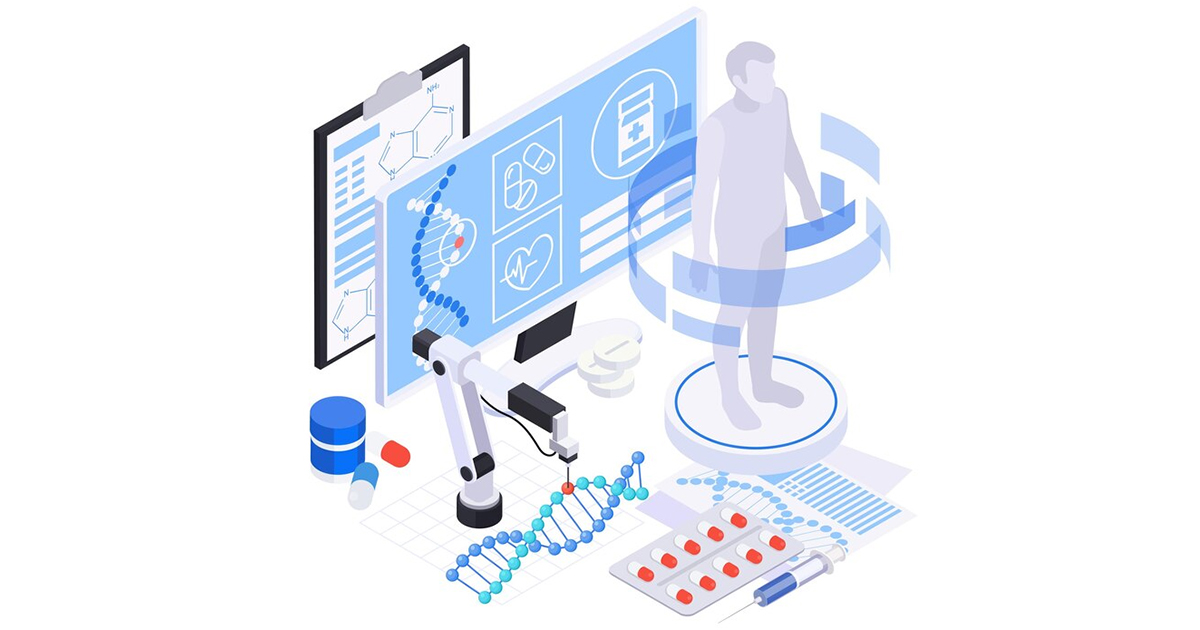The Intersection of Multi-Omics Data and Machine Learning in Medicine
A special issue of Journal of Personalized Medicine (ISSN 2075-4426). This special issue belongs to the section "Omics/Informatics".
Deadline for manuscript submissions: 20 March 2025 | Viewed by 2744

Special Issue Editor
Interests: virology; cardiovascular disease; machine learning; predictive modeling; Health Economics and Outcomes Research (HEOR); healthcare
Special Issue Information
Dear Colleagues,
The integration of multi-omics data and machine learning in medicine has gained significant momentum, revolutionizing our understanding of disease mechanisms and personalized treatment. Multi-omics data analysis, encompassing genomics, transcriptomics, proteomics, metabolomics, and epigenomics, provides a holistic view of biological systems. Leveraging machine learning algorithms, researchers can extract valuable insights, including disease biomarkers and predictive models, with the potential to transform healthcare outcomes.
The aim is to present the latest advancements, challenges, and prospects in the field of integrating multi-omics data and machine learning techniques in medicine, foster interdisciplinary discussions, and contribute to the advancement of precision medicine and improved patient care. The scope includes research studies, reviews, and methodologies that explore the application of multi-omics data analysis and machine learning algorithms in areas such as disease classification, biomarker identification, predictive modeling, network analysis, medical imaging, and ethical considerations.
Advancements in algorithms and hardware, such as graphics processing unit (GPU) computation, have driven a transformative shift in machine learning (ML). Simultaneously, there has been an exponential increase in the volume of data generated through high-throughput sequencing and other -omics techniques, including genomics and transcriptomics. The developments in Machine learning (ML) and omics data provide powerful tools for understanding diseases, improving diagnostics, and guiding personalized treatment strategies.
Advanced machine learning algorithms are being applied to large-scale multi-omics datasets to identify molecular biomarkers specific to diseases. These biomarkers can aid in the early detection, prognosis, and development of targeted therapies. Machine learning techniques are being employed to build predictive models that can forecast disease outcomes and treatment responses based on multi-omics data. This enables personalized medicine by helping clinicians tailor treatment plans to individual patients.
Original research articles that present novel findings and insights in the integration of multi-omics data and machine learning techniques in medicine; papers that propose new methodologies, algorithms, or computational tools specifically designed for the analysis and interpretation of multi-omics data in the context of medicine; comprehensive review articles that provide a critical overview of the current state of the art in the field of multi-omics data integration and machine learning in medicine; papers that showcase the application of multi-omics data and machine learning in disease diagnostics, treatment selection, and patient management; and papers that discuss the ethical considerations and challenges associated with the use of multi-omics data and machine learning in medicine are all welcome. These papers can explore topics such as privacy concerns, data sharing, bias mitigation, interpretability, and the responsible deployment of these technologies in clinical settings.
Dr. Hui Wu
Guest Editor
Manuscript Submission Information
Manuscripts should be submitted online at www.mdpi.com by registering and logging in to this website. Once you are registered, click here to go to the submission form. Manuscripts can be submitted until the deadline. All submissions that pass pre-check are peer-reviewed. Accepted papers will be published continuously in the journal (as soon as accepted) and will be listed together on the special issue website. Research articles, review articles as well as short communications are invited. For planned papers, a title and short abstract (about 100 words) can be sent to the Editorial Office for announcement on this website.
Submitted manuscripts should not have been published previously, nor be under consideration for publication elsewhere (except conference proceedings papers). All manuscripts are thoroughly refereed through a single-blind peer-review process. A guide for authors and other relevant information for submission of manuscripts is available on the Instructions for Authors page. Journal of Personalized Medicine is an international peer-reviewed open access monthly journal published by MDPI.
Please visit the Instructions for Authors page before submitting a manuscript. The Article Processing Charge (APC) for publication in this open access journal is 2600 CHF (Swiss Francs). Submitted papers should be well formatted and use good English. Authors may use MDPI's English editing service prior to publication or during author revisions.
Keywords
- multi-omics data
- machine learning
- precision medicine
- personalized medicine
- biomarker
- genomics
- transcriptomics
- proteomics
- metabolomics
- epigenomics
Benefits of Publishing in a Special Issue
- Ease of navigation: Grouping papers by topic helps scholars navigate broad scope journals more efficiently.
- Greater discoverability: Special Issues support the reach and impact of scientific research. Articles in Special Issues are more discoverable and cited more frequently.
- Expansion of research network: Special Issues facilitate connections among authors, fostering scientific collaborations.
- External promotion: Articles in Special Issues are often promoted through the journal's social media, increasing their visibility.
- e-Book format: Special Issues with more than 10 articles can be published as dedicated e-books, ensuring wide and rapid dissemination.
Further information on MDPI's Special Issue polices can be found here.






